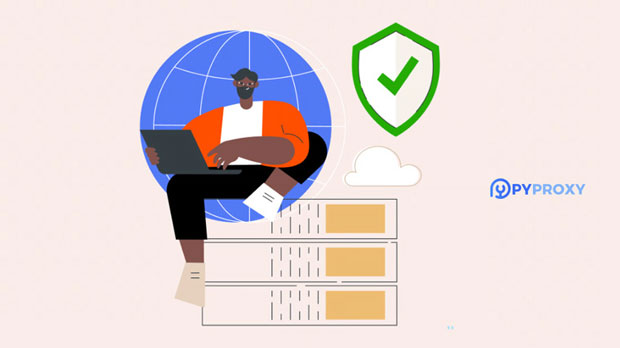When considering options for online privacy, security, and anonymity, two popular choices come into play: Proxy Web Browsers and Browser Extension Proxies. While both aim to mask a user's IP address and enhance browsing security, each method has distinct features, advantages, and limitations. This article will delve into a detailed comparison of Proxy Web Browsers and Browser Extension Proxies to determine which is the better choice for your online activities. By analyzing the strengths and weaknesses of both, users can make an informed decision based on their specific needs, whether it's privacy, speed, or convenience. Understanding Proxy Web BrowsersProxy Web Browsers are specialized web browsers that come with built-in proxy features. These browsers route all internet traffic through a proxy server by default, offering users a seamless browsing experience while ensuring their anonymity and security. This type of proxy solution is usually preconfigured, making it easy to use without needing additional setup or configuration.One of the key benefits of Proxy Web Browsers is the level of privacy they provide. Since all traffic is routed through a proxy, users can access websites without revealing their true IP address. This can help in cases where a user needs to remain anonymous or bypass geographical restrictions. Additionally, Proxy Web Browsers often come with additional privacy-enhancing features such as encrypted connections (HTTPS) and the ability to change or hide the user's location.However, there are certain drawbacks to Proxy Web Browsers. For one, they typically require the installation of a specialized browser, which may not be ideal for users who prefer using their regular browser. Furthermore, these browsers may not offer as much flexibility when it comes to managing individual connections, and they may be slower than using other proxy solutions, as all traffic is routed through a single server.The Rise of Browser Extension ProxiesBrowser Extension Proxies, on the other hand, are lightweight add-ons or extensions that can be integrated into an existing browser, such as Chrome, Firefox, or Safari. These extensions enable users to route their internet traffic through a proxy server without needing to switch to a different browser. This makes them a convenient choice for users who want to enhance their privacy while maintaining the familiar browser interface they are accustomed to.One of the biggest advantages of Browser Extension Proxies is their ease of use. Since they work directly within the browser, users can enable or disable the proxy with just a few clicks, allowing for greater flexibility. They also allow users to configure proxy settings on a per-website basis, which can be useful for those who only need to mask their IP for specific sites or services.However, Browser Extension Proxies are not without their limitations. Since the proxy is only active within the browser, it does not protect other applications or services on the computer. Additionally, some extensions may not offer the same level of encryption or security as Proxy Web Browsers, which could expose users to risks such as data leaks or tracking. Moreover, some free extensions may have limitations in terms of speed, data usage, or available proxy servers.Key Differences and ConsiderationsWhen comparing Proxy Web Browsers and Browser Extension Proxies, several factors should be taken into account to determine which is the better option for your needs. These include:1. Privacy and SecurityBoth Proxy Web Browsers and Browser Extension Proxies offer enhanced privacy by masking the user’s IP address. However, Proxy Web Browsers typically provide stronger security measures, such as encrypted connections, as they route all traffic through the proxy by default. Browser Extension Proxies, on the other hand, may only secure traffic within the browser and not other applications, which could lead to privacy gaps.2. FlexibilityBrowser Extension Proxies tend to offer more flexibility in terms of customization. Users can choose to enable or disable the proxy for specific websites, making them ideal for users who only need proxy protection for certain activities. Proxy Web Browsers, however, apply the proxy to all browsing activity, which may be more restrictive for some users.3. Speed and PerformanceProxy Web Browsers may experience slower speeds due to the fact that all internet traffic is routed through the proxy server. This can lead to latency, particularly if the proxy server is located far away from the user. In contrast, Browser Extension Proxies are generally faster, as they only proxy the traffic from the browser, leaving other applications unaffected.4. Ease of UseBrowser Extension Proxies have a significant advantage when it comes to ease of use. They can be quickly added to a browser with minimal configuration. Proxy Web Browsers, on the other hand, require the installation of a separate browser, which could be cumbersome for users who prefer sticking to their main browser.5. CostMost Proxy Web Browsers and Browser Extension Proxies are available in both free and paid versions. However, free Proxy Web Browsers may come with more restrictions in terms of server locations, speed, or features. Similarly, free Browser Extension Proxies may offer limited servers and data usage. Paid options typically offer better performance, security, and a wider range of features.Which is Better for You?The decision between Proxy Web Browsers and Browser Extension Proxies largely depends on your specific needs and preferences.If You Prioritize Privacy and SecurityIf your primary concern is privacy and you want a solution that offers robust protection across all your online activities, a Proxy Web Browser may be the better choice. It ensures that all of your internet traffic is routed through a secure proxy, making it harder for third parties to track you. It is ideal for users who value anonymity and security.If You Want Flexibility and ConvenienceOn the other hand, if you need a more flexible, convenient, and user-friendly option, a Browser Extension Proxy may be the way to go. It allows you to customize proxy settings per website and can be easily toggled on or off. This is ideal for users who are looking for a simple solution to enhance privacy without changing their entire browsing experience.ConclusionBoth Proxy Web Browsers and Browser Extension Proxies have their unique benefits and limitations. Proxy Web Browsers are perfect for users who prioritize security and want comprehensive protection across all internet activities. Browser Extension Proxies, on the other hand, offer more flexibility and convenience, making them ideal for casual users who want to enhance privacy without committing to a new browser. Understanding the differences and evaluating your personal needs will help you make the best choice for your online activities.
Jul 07, 2025



































































